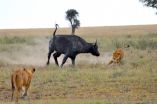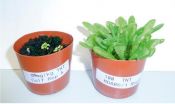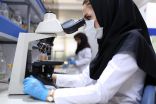(Press-News.org) MADISON, Wis. -- "Gaydar" -- the purported ability to infer whether people are gay or straight based on their appearance -- seemed to get a scientific boost from a 2008 study that concluded people could accurately guess someone's sexual orientation based on photographs of their faces.
In a new paper published in the Journal of Sex Research, researchers at the University of Wisconsin-Madison challenge what they call "the gaydar myth." William Cox, an assistant scientist in the Department of Psychology and the lead author, says gaydar isn't accurate and is actually a harmful form of stereotyping.
"Most people think of stereotyping as inappropriate," Cox says. "But if you're not calling it 'stereotyping,' if you're giving it this other label and camouflaging it as 'gaydar,' it appears to be more socially and personally acceptable."
Cox and his team questioned the validity of the previous research, citing differences in the quality of the photos used for the gay and straight people featured in the study. The gay men and lesbians, according to Cox's studies, had higher quality pictures than their straight counterparts. When researchers controlled for differences in photo quality, participants were unable to tell who was gay and straight.
Another reason people's judgments of sexual orientation are often wrong, Cox says, is that such a small percentage of the population -- 5 percent or less -- is gay.
"Imagine that 100 percent of gay men wear pink shirts all the time, and 10 percent of straight men wear pink shirts all the time. Even though all gay men wear pink shirts, there would still be twice as many straight men wearing pink shirts. So, even in this extreme example, people who rely on pink shirts as a stereotypic cue to assume men are gay will be wrong two-thirds of the time," Cox says.
Cox authored the paper with professors Patricia Devine and Janet Hyde and UW-Madison graduate Alyssa Bischmann.
In one of the studies, Cox and his team manipulated what participants understood about gaydar by providing different explanations of gaydar for three groups. The researchers told one group that gaydar is real, told another that gaydar is stereotyping, and did not define gaydar for the third group.
The group that was led to believe gaydar is real stereotyped much more often than the other groups, assuming that men were gay based on the stereotypic cues -- statements such as "he likes shopping."
"If you tell people they have gaydar, it legitimizes the use of those stereotypes," Cox says.
That's harmful, he says, because stereotypes limit opportunities for members of stereotyped groups, narrowing how we think about them and promoting prejudice and discrimination -- even aggression.
In a 2014 study on prejudice-based aggression, Cox and Devine had participants play a game with a subject in another room that involved administering electric shocks to the subject. When the research team implied that the subject was gay using a stereotypic cue, participants shocked him far more often than when the research team explicitly told them he was gay.
"There was a subset of people who were personally very prejudiced, but they didn't want other people to think that they were prejudiced," Cox says. "They tended to express prejudice only when they could get away with it."
Cox hopes his research counteracts the gaydar myth and exposes it as something more harmful than most people realize.
"Recognizing when a stereotype is activated can help you overcome it and make sure that it doesn't influence your actions," Cox says.
INFORMATION:
Devin Lowe, (608) 263-1986, delowe@wisc.edu
CONTACT: William Cox, wtcox@wisc.edu
The gut is an important reservoir for drug-resistant bacteria responsible for life-threatening hospital-acquired infections. A study in mice published on September 3rd in PLOS Pathogens reports that two of the most common antibiotic-resistant bacterial species circulating in hospitals occupy and effectively share the same location in the gut, and that they can be eliminated by fecal transplantation of a healthy gut microbiome.
Eric Pamer, from Memorial Sloan-Kettering Cancer Center in New York, USA, and colleagues, investigated the interactions between vancomycin-resistant ...
Much like birds fly in flocks to conserve energy, dolphins swim in pods to mate and find food, and colonies of ants create complex nests to protect their queens, immune cells engage in coordinated behavior to wipe out viruses like the flu. That's according to a new study published today in the journal Science by researchers at the University of Rochester School of Medicine and Dentistry.
The findings reveal, for the first time, how immune cells work together to get to their final destination - the site of an injury or infection. The body is expansive and a virus or bacteria ...
WASHINGTON, DC (September 3, 2015)-- The District of Columbia's needle exchange program prevented 120 new cases of HIV infection and saved an estimated $44 million over just a two-year period, according to a first-of-a-kind study published today by researchers at the Milken Institute School of Public Health (Milken Institute SPH) at the George Washington University.
"Our study adds to the evidence that needle exchange programs not only work but are cost-effective investments in the battle against HIV," says Monica S. Ruiz, PhD, MPH, an assistant research professor in ...
Why are there not more lions when there's plenty of prey on the African savanna?
A research team including two University of Guelph ecologists has discovered an unexpected pattern linking prey and predator species in diverse ecosystems worldwide.
Integrative biology professors John Fryxell and Kevin McCann co-authored the paper, published today in Science. The team included researchers at McGill University, the University of British Columbia and the Perimeter Institute for Theoretical Physics in Waterloo, Ont.
Beyond lions and the gazelles they hunt on the African ...
This news release is available in Japanese.
Regular exposure to bacteria particles and farm dust protects children from allergies because it blunts their inflammatory immune responses, a new mouse study suggests. The study implicates a particular anti-inflammatory enzyme, A20, in this protective effect. While aspects of how allergies develop remain unclear, scientists know they're driven not only by genes but also by environment. Homes with pets, as well as dairy farms - where children breathe dust containing higher doses of fungal particles, cowshed-derived bacteria ...
This news release is available in Japanese.
Ecological communities around the world are richly varied, but a new study finds that many of these diverse communities follow an unexpected, yet consistent pattern: where prey are abundant, there are not proportionally more predators. Instead, as prey biomass increases, the ratio of predator-to-prey biomass decreases. This pattern was systematically identified across different areas, including grasslands, forests, lakes, and oceans, revealing an underlying structural organization of ecosystems. Pinpointing underlying ...
This news release is available in Japanese.
Researchers have identified a mutation in plants that allows them to break down TNT, an explosive that has become highly prevalent in soil in the last century, particularly at manufacturing waste sites, mines, and military conflict zones. TNT, or 2,4,6-trinitrotoluene, is a toxic and persistent environmental pollutant that accumulates in the roots of plants, inhibiting growth and development. The identification of a plant mechanism that not only evades the negative impacts of TNT, but breaks down this harmful substance could ...
This news release is available in Japanese.
A special news edition, Science in Iran, looks closely at the scientific challenges and triumphs of a country that has faced international isolation in recent years. Following an exclusive interview about the Iran nuclear deal with Ali Akbar Salehi, president of the Atomic Energy Organization of Iran, Science International News Editor Richard Stone delves further into the state of Iran's scientific endeavors. Decades of economic sanctions have deprived Iranian scientists of critical scientific resources and collaboration. ...
Biologists at the University of York have taken an important step in making it possible to clean millions of hectares of land contaminated by explosives.
A team from the Centre for Novel Agricultural Products (CNAP) in the University's Department of Biology has unravelled the mechanism of TNT toxicity in plants raising the possibility of a new approach to explosives remediation technology. TNT has become an extensive global pollutant over the last 100 years and there are mounting concerns over its toxicity to biological systems.
The study, which is published in Science, ...
Researchers at VIB (a leading life sciences institute in Flanders, Belgium) and Ghent University have successfully established a causal relationship between exposure to so-called farm dust and protection against asthma and allergies. This breakthrough discovery is a major step forward towards the development of an asthma vaccine. The results of the research were published in the leading journal Science.
It is commonly known that drinking raw cow's milk can provide protection against allergies. A 14-member research team, led by professors Bart Lambrecht and Hamida Hammad ...




